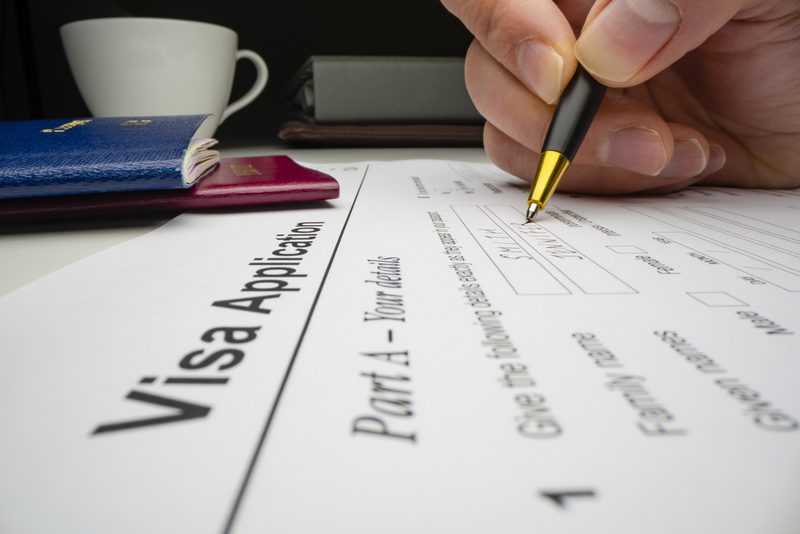
If you want to be study in the United States, you will be required to have one of three primary student visas’: F-1 Student Visa, J-1 Exchange Visa or M-1 Student Visa. How do you know which visa you should be applying for to study in the U.S.? Below, we have laid out the three visas’, breaking down how they work and giving you an idea of how to get a student visa.
International Student Visas
F-1 Visa – The F-1 is a visa you will need to obtain to be able to study in the U.S. Out of the three different types of visa, the F-1 is the most common for an international student in the U.S. This will be issued if you are taking part in an academic program at an accredited U.S. college or university or English at an English language institute. You will need to be studying the minimum course load for a full-time student to maintain the F-1 visa. The visa also allows for employment, whether that be on-campus or part-time, but only for a maximum of 20 hours per week. In addition, the visa also allows students to work off=campus on optional practical training (OPT) both during and after the completion of the degree. You can apply for OPT up to 9 months after being enrolled.
J-1 Visa – The J-1 visa is given to those who are required to receive practical training that is not available to get in their country of origin, in order to accomplish their academic program. Similar to the F-1 visa, the J-1 also allows for employment, with similar boundaries, granted that they have been granted permission by the Department of Homeland Security SEVP (Student Exchange Visitor Program).
M-1 Visa – The M-1 visa is given to those planning for non-academic or vocational study or training in the U.S. Unlike the F-1 and the J-1 visas, those with a M-1 are not permitted to work during their studies. Applicants for the visa are obliged to provide evidence that they have adequate funds to pay for their tuition and living costs throughout their time in the U.S.
How to Apply for your Visa
There are various steps you will need to follow when applying for a student visa, however these steps can vary by U.S. embassy or consulate. These can be found on the U.S. embassy or consulate website. Firstly, make sure you do your research to find out your university’s admission policy as each school will have different academic eligibility criteria.
Online Visa Application
You can apply for a visa by completing the Online Nonimmigrant Visa Application Form (DS-160). When you have completed the form, make sure to print out a copy for the next stage of the application process.
Interview
Interviews are usually required for student visa applicants. You will need to schedule an appointment at the U.S. embassy or consulate at the nation where you live. Waiting times for appointments can vary therefore it is always useful to apply for a visa as early as possible to get a lower appointment wait time.
When the time for the interview comes around, you may need to pay the non-refundable visa application fee. If your visa is approved, you might also need to pay a visa issuance fee, if appropriate for your nationality.
Make sure you bring the correct documents along with you to your interview. The documents needed:
- Passport
- Nonimmigrant Visa Application Form (DS-160)
- Application fee payment receipt
- Photo
- Certificate of Eligibility for Nonimmigrant (F-1) Student Status-For Academic and Language Students, Form I-20 or Certificate of Eligibility for Nonimmigrant (M-1) Student Status for Vocational Students, Form I-20
Additional Documentation that may be required include:
- Transcripts, degrees or certificates from previous schools attended
- Your intent to depart the United States upon completion of course
- Evidence of how you will be able to fund your tuition and living costs
A consular officer will conduct the interview and determine with you are qualified to receive a student visa. The officer will let you know if further administrative processing may be required in your application.
Entering the United States
It is worth keeping in mind that obtaining a valid student visa does not guarantee your entry into the U.S. It will be U.S. Customs and Border Protection (CBP) officials that will have the authority to permit or deny your entry into the country. A CBP official will provide you with a Form I-20 at the point of entry, where they will make the decision. Once the decision has been made to permit your entry, you will then be provided with a Form I-94, Arrival-Departure. This is a small white card given to you that shows the length of stay you have been permitted.
Can I Stay After Graduating?
Those with an F-1 visa are permitted to depart from the United States within 60 days after their academic program has ended. Those with a J-1 or M-1 visa are permitted to leave within 30 days after their program has ended.
Students who wish to extend their stay may request an extension through the U.S. Citizenship and Immigration Services (USCIS) website.
Students who fail to depart from the country on time will be out of status. Therefore, under U.S. law, your visa will be automatically voided. In addition, it will also make you ineligible for visas in the future.
Can I Change My Student Visa Status While in the United States?
If you wish to change your visa status while you are in the United States, you will need to le the USCSI know.
For more instructions on how to apply for a visa, visit the U.S. embassy or consulate site.
After you understand the process on how to get a student visa make sure you go through each step meticulously. Applying and receiving a visa may sound like a long process however it will be needed if you decide to commence your studies in the United States. After you complete the student visa requirements, you can concentrate more on your studies in the land of the free.
SEE ALSO: How to Apply to College














